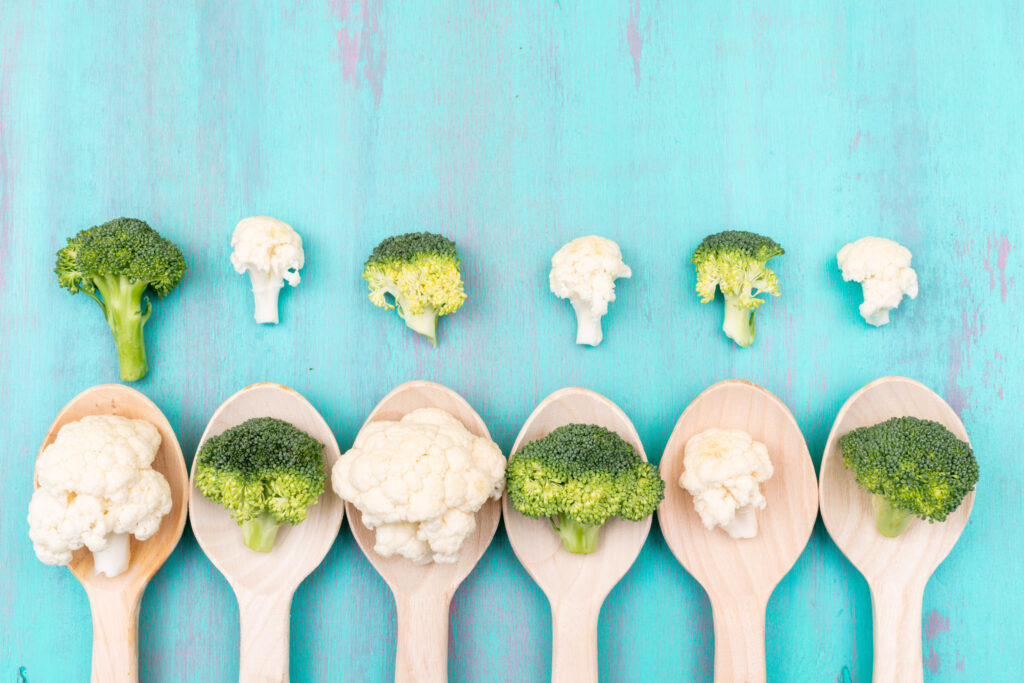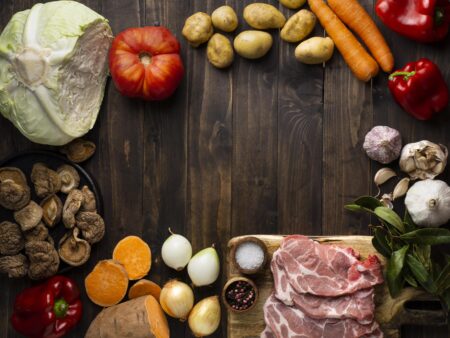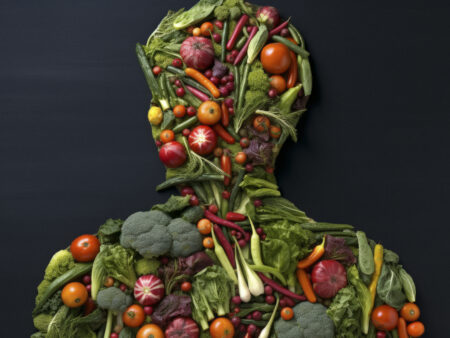
The macrobiotic diet is more than just a way of eating; it’s a lifestyle that promotes balance and harmony with nature. Rooted in traditional Japanese dietary principles, the macrobiotic diet emphasises whole, natural, and unprocessed foods. It is not just focused on physical health but also aims to bring spiritual and emotional balance. By eating in harmony with nature’s cycles, the diet claims to provide greater well-being and vitality.
In this detailed article, we will explore the core concepts, benefits, potential drawbacks, and practical ways to follow the macrobiotic diet.
Origins of the Macrobiotic Diet
The term “macrobiotic” comes from the Greek words “macro,” meaning large or long, and “bios,” meaning life. It was first used by Hippocrates, the ancient Greek physician, to describe a way of life that promotes longevity and good health. However, the modern macrobiotic diet is primarily attributed to Japanese philosopher George Ohsawa, who popularised it in the mid-20th century.
Ohsawa believed that achieving balance between the yin (passive) and yang (active) energies of food and life could lead to better health. His teachings were further refined by Michio Kushi, a student of Ohsawa, who helped introduce the macrobiotic diet to the West.
Core Principles of the Macrobiotic Diet
The macrobiotic diet is based on several core principles, all of which are grounded in Eastern philosophy:
1. Balance of Yin and Yang
The macrobiotic diet categorises foods based on their yin (cool, passive, and expanding energy) and yang (hot, active, and contracting energy) qualities. The goal is to create a balanced diet that harmonises these energies. Foods that are too yin (e.g., sugary or processed foods) or too yang (e.g., salty or heavily spiced foods) are thought to disrupt the body’s natural balance.
2. Whole, Unprocessed Foods
A major component of the macrobiotic diet is the emphasis on whole, natural, and unprocessed foods. This means eating foods in their most natural state, such as whole grains, beans, vegetables, and fruits. The belief is that these foods retain their life energy and therefore provide greater nourishment.
3. Seasonal and Local Foods
The macrobiotic diet encourages eating foods that are in season and grown locally. This is thought to bring harmony with nature, as our bodies are believed to be better suited to digest and benefit from foods that grow in our immediate environment.
4. Mindful Eating
Mindfulness is another key aspect of the macrobiotic diet. It is not only about what you eat, but also how you eat it. The diet promotes eating slowly, chewing food thoroughly, and being present during meals. This approach fosters a deeper connection to the food and enhances digestion.
5. Avoiding Extremes
Extremes in diet and lifestyle are discouraged. This includes avoiding overeating, under-eating, and consuming foods that are too hot, cold, or rich in flavour. The macrobiotic approach values moderation in all aspects of life.
Foods Included in the Macrobiotic Diet
The macrobiotic diet is primarily plant-based, although some variations may include small amounts of fish. The following is a breakdown of the core foods typically included:
1. Whole Grains (40–60% of the Diet)
Whole grains form the foundation of the macrobiotic diet. Common grains include:
- Brown rice
- Barley
- Oats
- Millet
- Buckwheat
- Quinoa
These grains are usually cooked and served as the main portion of the meal.
2. Vegetables (20–30% of the Diet)
Vegetables are another key component. Emphasis is placed on seasonal, locally grown vegetables. A variety of cooking methods such as steaming, sautéing, and boiling are recommended. Common vegetables include:
- Leafy greens (kale, spinach)
- Root vegetables (carrots, turnips)
- Cruciferous vegetables (broccoli, cabbage)
- Sea vegetables (nori, wakame)
3. Beans and Legumes (5–10% of the Diet)
Beans and legumes are a primary source of protein in the macrobiotic diet. Examples include:
- Lentils
- Chickpeas
- Adzuki beans
- Tofu and tempeh (fermented soy products)
4. Seaweed
Sea vegetables, such as nori, wakame, and kombu, are considered essential in the macrobiotic diet. These are rich in minerals and are thought to help balance the body’s energy.
5. Soup (1–2 Bowls Daily)
Soups, particularly miso soup, are commonly consumed with every meal. Miso is a fermented soybean paste rich in probiotics, which support digestive health.
6. Occasional Fish
While the macrobiotic diet is primarily plant-based, small amounts of fresh fish may be consumed occasionally, typically once or twice a week. Fish should be local and wild-caught, and it is often served steamed or baked.
7. Natural Seasonings
Natural, unprocessed seasonings like sea salt, tamari (a type of soy sauce), and miso are used sparingly to flavour dishes.
Foods to Avoid
The macrobiotic diet restricts certain foods that are seen as imbalanced or harmful to health. These include:
- Processed Foods: Refined sugars, white flour, and processed snacks are eliminated.
- Meat and Dairy: Red meat, poultry, and dairy products are generally avoided, although small amounts of fish are allowed.
- Nightshade Vegetables: Vegetables such as tomatoes, peppers, potatoes, and aubergines are avoided due to their yin properties.
- Alcohol and Caffeine: These are seen as overly stimulating and disruptive to the body’s energy balance.
Benefits of the Macrobiotic Diet
There are several potential health benefits associated with the macrobiotic diet, particularly due to its emphasis on whole, plant-based foods:
1. Weight Loss
The diet’s focus on whole grains, vegetables, and low-calorie foods can promote healthy weight loss. Since processed foods and sugars are eliminated, it can help reduce calorie intake and manage weight effectively.
2. Heart Health
The macrobiotic diet is naturally low in saturated fats and cholesterol, making it heart-healthy. Consuming high-fibre foods such as whole grains, beans, and vegetables can help lower cholesterol levels and reduce the risk of heart disease.
3. Improved Digestion
Whole grains, beans, and vegetables provide ample fibre, which supports digestive health. The inclusion of fermented foods like miso also introduces beneficial bacteria, promoting gut health.
4. Mental and Emotional Balance
The diet’s emphasis on mindful eating and balance between yin and yang can lead to improved mental and emotional well-being. The act of eating more slowly and thoughtfully may help reduce stress and anxiety.
Potential Drawbacks
While the macrobiotic diet has many potential benefits, there are also some concerns and challenges:
1. Nutritional Deficiencies
Due to the restriction of certain food groups, such as meat and dairy, there may be a risk of nutritional deficiencies. Particularly, the diet may lack sufficient levels of vitamin B12, calcium, iron, and protein. People following a macrobiotic diet may need to take supplements to address these deficiencies.
2. Difficulty in Following
The diet’s strict guidelines can be difficult to follow, especially for those who live in areas where fresh, seasonal foods may not be readily available. The preparation of whole foods can also be time-consuming, which may be a barrier for some individuals.
3. Limited Food Variety
Because certain vegetables, fruits, and processed foods are restricted, the macrobiotic diet may feel monotonous over time. Some individuals may find it challenging to maintain a varied and interesting diet.
How to Get Started with the Macrobiotic Diet
If you are interested in adopting the macrobiotic diet, it is important to approach it gradually. Here are a few tips to get started:
1. Start by Incorporating More Whole Grains
Begin by replacing refined grains with whole grains like brown rice, quinoa, and barley. These can form the base of your meals.
2. Eat Seasonally
Focus on eating vegetables that are in season in your area. This will not only align with macrobiotic principles but also provide the freshest and most nutrient-dense produce.
3. Add Fermented Foods
Include fermented foods like miso, tempeh, and sauerkraut in your diet to support digestive health and balance gut bacteria.
4. Experiment with Cooking Methods
Try different cooking methods such as steaming, sautéing, and boiling to preserve the nutrients in your food. Avoid deep-frying or using excessive oil.
5. Seek Guidance
If you’re new to the macrobiotic diet, consider consulting a nutritionist or a macrobiotic expert to ensure you are getting all the essential nutrients.
The macrobiotic diet offers a holistic approach to health, blending food choices with lifestyle changes aimed at achieving balance and harmony. While it can be a beneficial way of eating for many, it requires careful planning to avoid nutritional deficiencies and maintain variety. By focusing on whole, natural foods and eating mindfully, the macrobiotic diet promotes not just physical health, but emotional and spiritual well-being as well.






